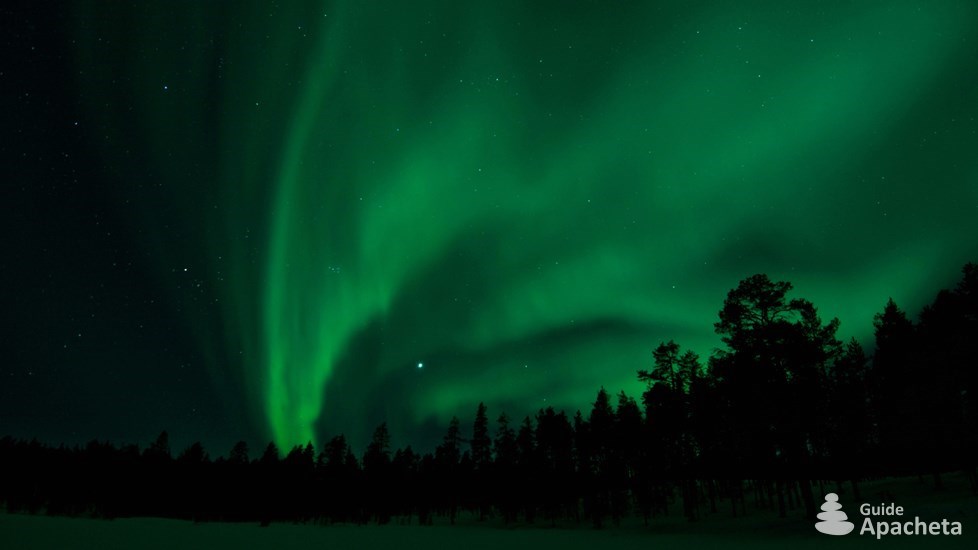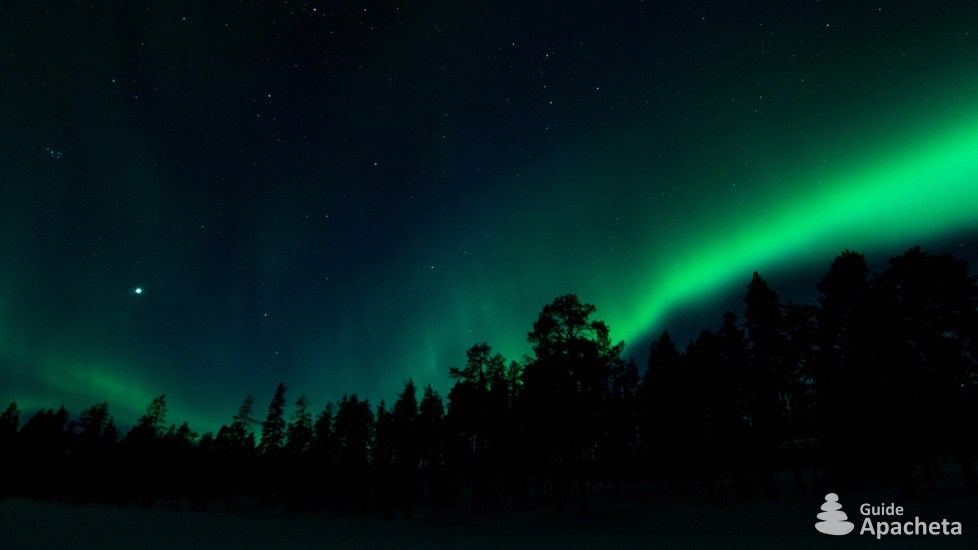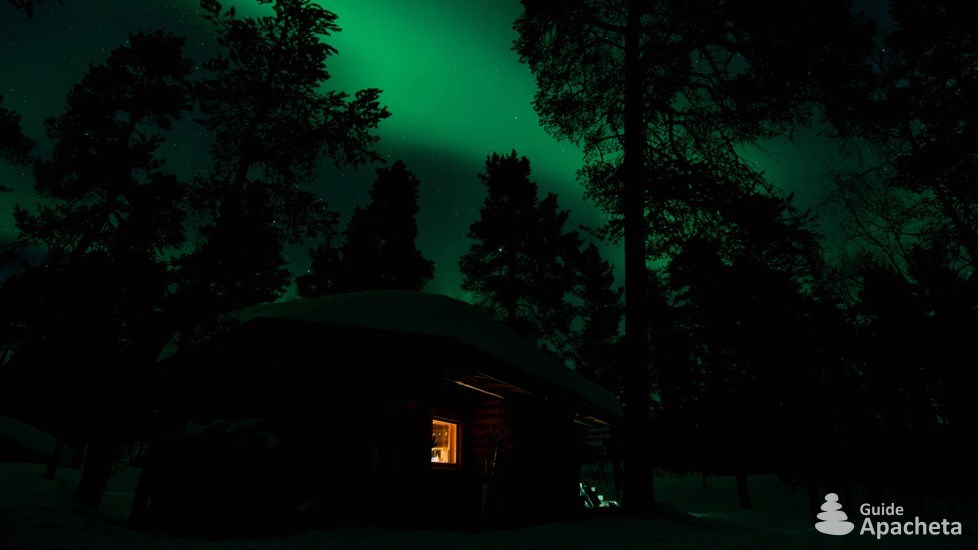The northern lights in Lapland

What is an northern lights display?
The aurora borealis is a bright and colourful natural phenomenon that occurs in the northern hemisphere at altitudes of over 100 kilometres. In the southern hemisphere, it is known as the aurora australis. Polar aurorae are formed following a major solar flare that throws huge quantities of particles into space. When they enter the Earth’s atmosphere at the magnetic poles, these particles release energy that diffuses light. Polar aurorae are predominantly green, but depending on the gases encountered, which vary with altitude, other colours may appear: blue, yellow, violet or red.
The luminous intensity of the polar aurora varies according to the power of solar flares, but also from year to year, as the sun’s activity is cyclical. Polar aurorae can take a variety of forms, depending on how far they penetrate the atmosphere: a circular arc, a jet of light, a trail of light, a corona, a vertical curtain, a veil, etc. They can be stealthy, appearing for just a few moments, or last throughout the night. As they are constantly moving, their speed is just as variable.

When can I see the northern lights?
The aurora borealis are active all year round, but to see them, it must be dark. They are best seen in winter, when the sun sets early. At the latitude of Urho Kekkonen National Park, the ideal time is from late September to mid-March, when the nights are long and dark. They generally appear in the sky at around 8pm, and the show can last for several hours. The aurora borealis arrive from the north and spread across the sky. The intensity of the aurora borealis is measured by the KP index, ranging from 0 to 9. Below 2, they are not visible to the naked eye, and only a slight white haze can be seen.
The Sun has an 11-year activity cycle. Every 11 years, it enters a phase of major solar flares, which then diminish until they reach a calm phase, before rising again in intensity. The last peak in intensity was in 2014, and the last trough in 2019. It is therefore currently in a rising phase until 2025. The aurora borealis can be seen at any time, including during the calm phase. But the more major solar flares there are, the more present and intense the aurora borealis will be.
The phase of the Moon is also important for observation. When the Moon is full, it lights up the sky, so the aurora borealis appear less intense. On the other hand, when the moon is new, the dark night makes for better observation.
To observe the northern lights, you obviously need clear skies. If there are clouds, it is difficult to see them.
Northern lights forecasts
- Aurora Service : www.aurora-service.net
- My Aurora Forecast : play.google.com, apps.apple.com

How do you photograph the northern lights?
To take good photos of the northern lights, you need a tripod. If you have a compact camera where you can’t adjust the settings, the best thing to do is to choose “fireworks” or “night landscape” mode. That way you’ll be able to get a few souvenir shots. Ideally, you should take a hybrid or SLR camera with good light sensitivity. In the dark of night, it’s difficult for your camera to focus. If the moon is present, you can focus on it. Otherwise, the second essential accessory after the tripod is a powerful flashlight of at least 600 lumens.
Here are the basics for taking photos of the northern lights. These are the basic settings for a successful photo. For more detailed explanations, there are many tutorials on the internet.
- Use a wide-angle lens to photograph a large area of the sky.
- Anchor the tripod in the snow to avoid micro-vibrations.
- Deactivate the automatic stabiliser, which is useless with a tripod.
- Set the camera to manual “M” mode.
- Set the focal length to the minimum, f4 or smaller.
- Adjust the shutter speed to obtain a 20-second pause and an ISO of 400.
- Focus on an illuminated object, the Moon or any other light source, as far away as possible.
- Use a remote control, or set the self-timer to a few seconds.
If the photo is too dark, increase the ISO without exceeding 800, as you risk graininess, or the exposure time, without exceeding 30 seconds. If it’s too light, reduce the exposure time.
If the aurora is blurred, it’s because you’ve focused on something that’s too close. In this case, try focusing on something further away, or switch to manual focus and set it to infinity. If the camera is unable to focus because it is not sufficiently sensitive to light, you should also switch to manual focusing.
Discover Finnish Lapland in winter, with the Urho Kekkonen National Park guide.
